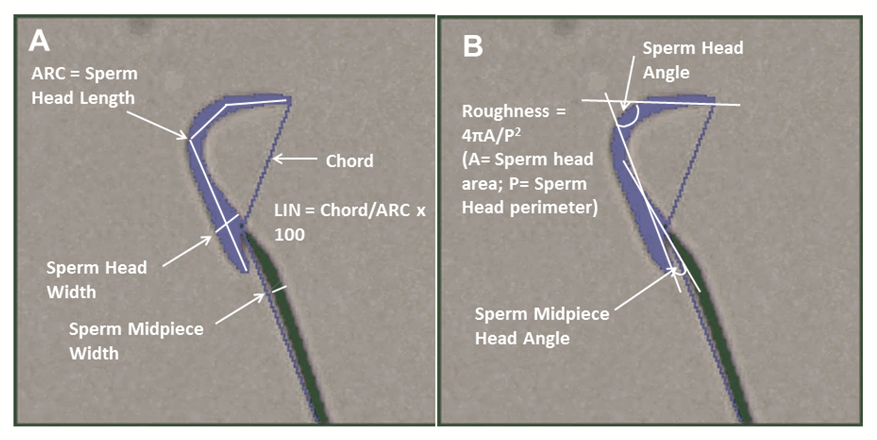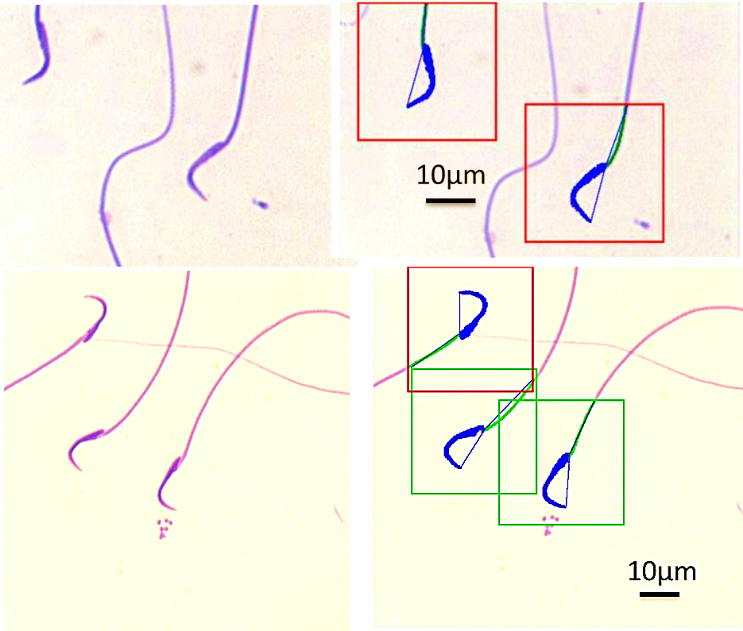Not of Mice and Men but Rat sperm morphology quantified
In a previous Microptic blog in 2015, we reported on the SCA TOX system of Microptic and its uses in reproductive toxicology testing. It was further indicated that tailor made modules exist for sperm motility, vitality, fragmentation and that in principle it was possible to threshold rat sperm for measurement of sperm morphometry after staining with SpermBlue. However, the cut-off values for these morphometric values to determine the percentage normal sperm morphology has been lacking.
After some hard work by two groups in South Africa (Western Cape and Stellenbosch universities) and one in France (Paris), a paper was published in January 2018 in Biotechnic and Histochemistry (https://doi.org/10.1080/10520295.2017.1380842) showing two crucial aspects. Firstly, a detailed method how to quantitatively determine the percentage normal sperm morphology in almost any animal species, and secondly, the specific cut-off values for laboratory Wistar and Sprague-Dawley rats have been performed.
What was our greatest challenge? Firstly, the accurate thresholding of the curious hook shaped sperm head and the definition of several new parameters such as ARC (true sperm length), Chord and Linearity (Fig. 1). This software development was done by Microptic bio-engineers.

Fig. 1: Accurate thresholding of rat sperm head and midpiece.
But how did we find the cut-off values? Briefly, we measured some 10 sperm morphometric values in about 50 rats (100 sperm per rat) and subsequently looked at percentile distributions of these parameters and matched these results with what was visually really looking abnormal. These cut-off values were then customized in the Morphology module of SCA. After this it was possible to define normal versus abnormal automatically (Fig. 2).

Fig. 2: Red blocks (abnormal) and green blocks (normal) sperm on right hand side showing automated analysis of sperm shown on the left hand side.
The findings of this work is very important from three points of view:
- Previous studies suggested (wrongly) that in rats about 95% of sperm are normal and we have shown average values for Wistar and Sprague Dawley to be about 70%.
- It is difficult to distinguish microcephalic and macrocephalic sperm in rats from each other by subjective visual assessment. Quantitative assessment as we have done show big differences in measurements such as sperm head length. Basic sperm form in rats is more homogenous when compared to e.g. the heterogenous distribution in humans and carnivores. It is accordingly more difficult to visually assess abnormal in rats than humans.
- Our publication now provides a sound quantitative basis for future studies in rat reproductive toxicology. It has been shown by many that the laboratory rat provides a good basis for reproductive toxicology assessment in general.
Prof Gerhard van der Horst (PhD, PhD)
Senior Consultant
MICROPTIC S.L.



Leave A Comment